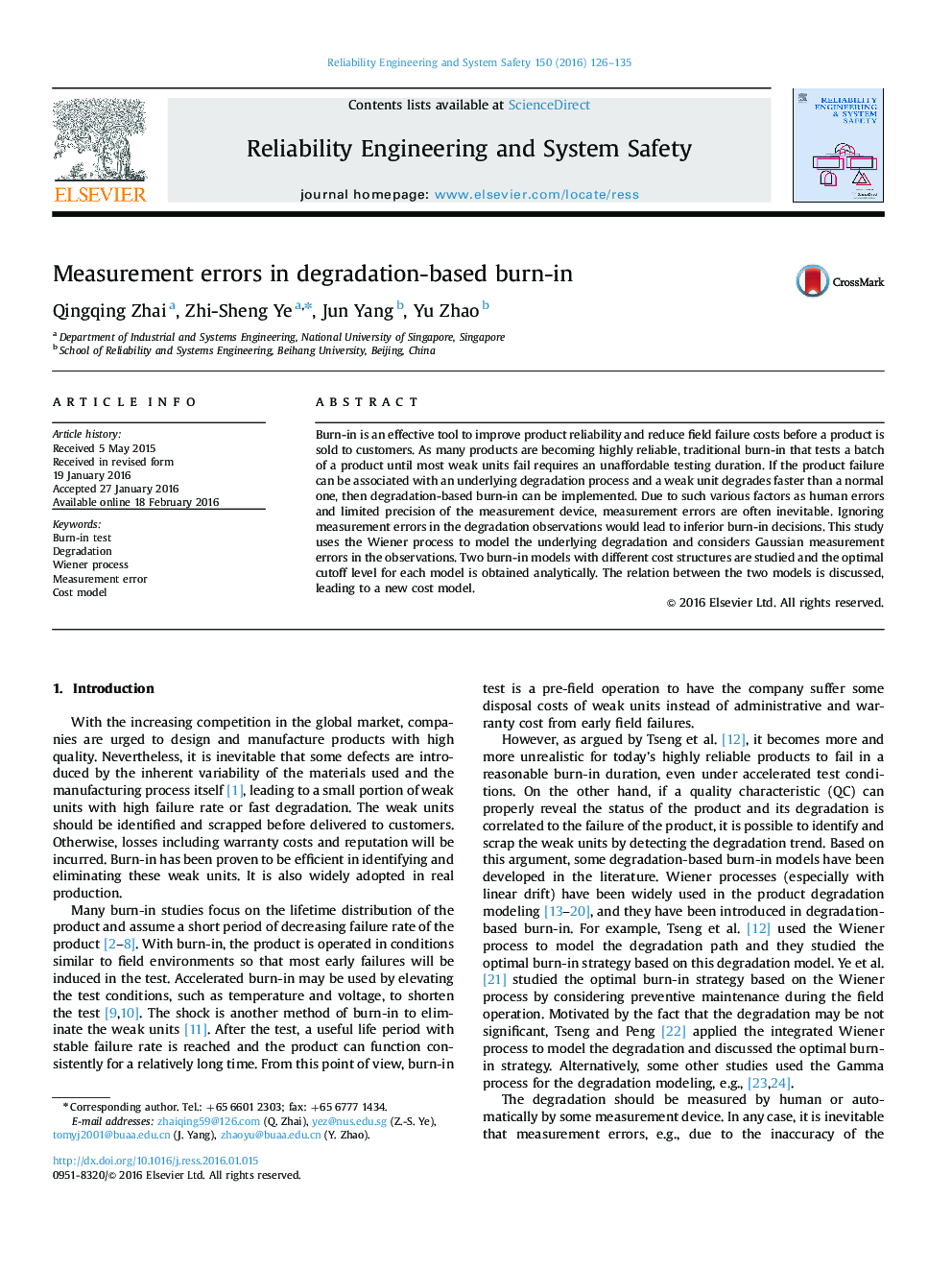| Article ID | Journal | Published Year | Pages | File Type |
|---|---|---|---|---|
| 806706 | Reliability Engineering & System Safety | 2016 | 10 Pages |
•Degradation-based burn-in considering measurement errors is studied.•Optimal burn-in strategies are proposed under different cost models.•Impacts of measurement errors on the burn-in strategies are investigated.•A new cost model is proposed for burn-in test.
Burn-in is an effective tool to improve product reliability and reduce field failure costs before a product is sold to customers. As many products are becoming highly reliable, traditional burn-in that tests a batch of a product until most weak units fail requires an unaffordable testing duration. If the product failure can be associated with an underlying degradation process and a weak unit degrades faster than a normal one, then degradation-based burn-in can be implemented. Due to such various factors as human errors and limited precision of the measurement device, measurement errors are often inevitable. Ignoring measurement errors in the degradation observations would lead to inferior burn-in decisions. This study uses the Wiener process to model the underlying degradation and considers Gaussian measurement errors in the observations. Two burn-in models with different cost structures are studied and the optimal cutoff level for each model is obtained analytically. The relation between the two models is discussed, leading to a new cost model.
